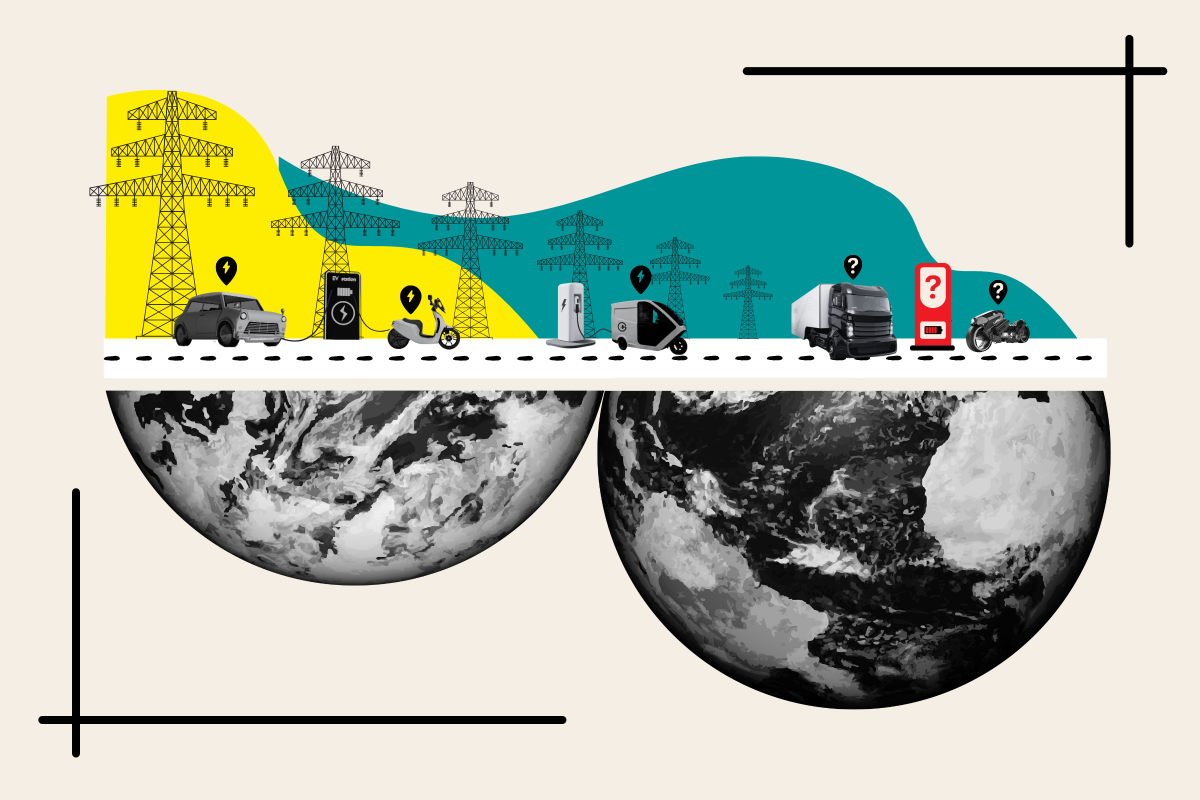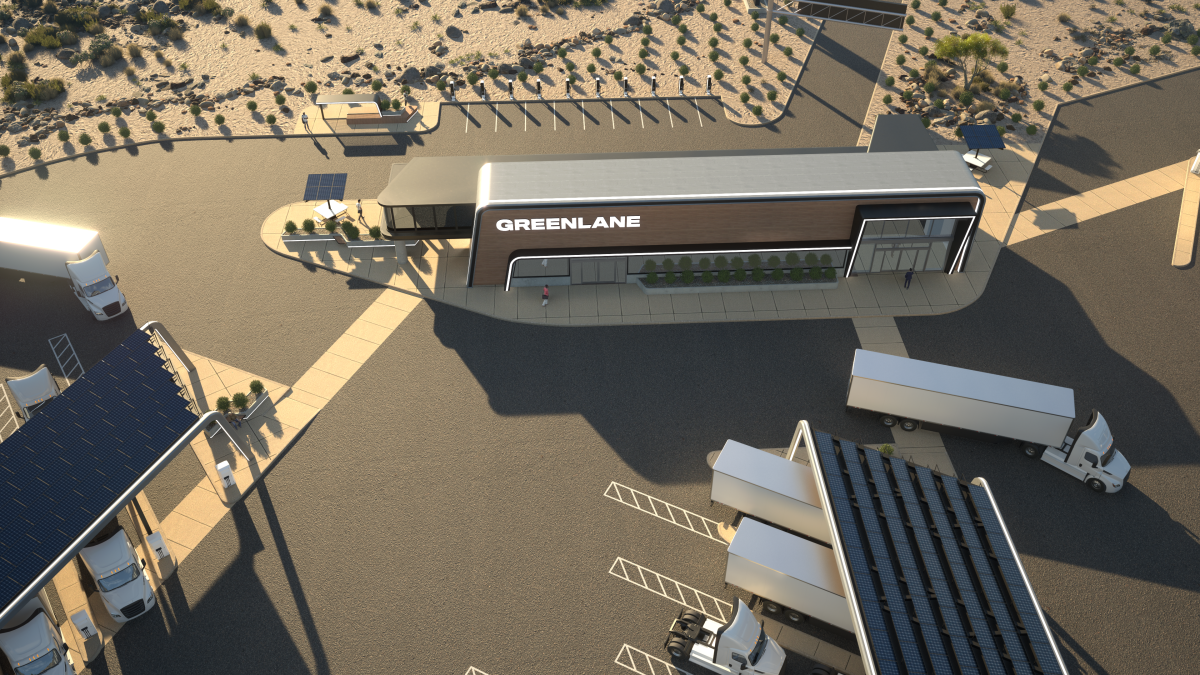Jeff Prosserman remembers driving his electric car around New York a few years ago and encountering a common frustration for battery-electric vehicle owners: There were few EV charging stations that fit the way many people live in cities.
"I ended up seeing that this could be a real pain point," Prosserman told Newsweek as he considered the needs of EV owners who park on the street. "We need to provide convenient and affordable charging access."
Read more: Earn Cash Back at EV Charging Stations
Prosserman started thinking of ways to "democratize" EV charging for urban apartment dwellers who don't have a garage or carport to use for charging up. That's when the proverbial light bulb of an idea clicked on. In his case, that light was atop a lamppost.

"We do that by retrofitting existing lampposts into an EV charging platform," he said.
Prosserman's company Voltpost recently unveiled its design for EV chargers that take advantage of the power conduits attached to streetlights. That could cut down on the construction time and costs needed to install charging stations and allow U.S. cities to catch up with many in Europe where such street-side charging is more common.
The Voltpost design adds a cylindrical covering to the bottom of the lamppost that houses the hardware for the charger and retractable cables for users to connect to their cars.
Ownership and oversight of streetlights, sidewalks and the electrical lines beneath them varies from one place to another, and Prosserman said much of his work is now focused on forging relationships with municipal officials and electric companies.
"Working with governments and utilities is a slow process, and you have to create alignment and build capacity," he said.
Voltpost has tested its chargers in New York, and Prosserman said the company is in talks about installations in cities in California, Illinois, Michigan and New Jersey—all places that have set climate targets that will depend in part on EVs to reduce emissions from the transportation sector.
The growth of EV sales has slowed recently as car buyers express concerns about battery range and the lack of adequate charging sites.
Voltpost is among dozens of startup companies and initiatives by major automakers working to scale up EV charging for a range of settings including public-access charging on urban streets and in rural off-grid areas and private charging for commercial vehicle fleets.
"It's a unique moment in history, where there's both policy and market tailwinds to unlock this as the next generation of infrastructure for the country," Prosserman said.

Billions of dollars in private investment are flowing into the EV charging effort, much of it spurred on by ambitious EV targets at the state level, stringent new tailpipe emissions standards on passenger cars and heavy trucks at the federal level, and generous support in policies initiated by President Joe Biden's administration.
The 2021 Infrastructure Law and 2022 Inflation Reduction Act offer direct grants, low interest loans and tax credits to encourage more EV chargers. The White House says the number of public charging ports has grown by 70 percent since Biden took office, to about 170,000, but that is still far from the president's goal of 500,000 chargers by the end of the decade.
"For people that are looking into buying an electric vehicle, I think that their options for charging are going to increase, that they're going to see more charging stations available, and they'll also have more flexibility in choosing charging stations," transportation researcher Ray Minjares told Newsweek. Minjares directs the Heavy-Duty Vehicles Program for the International Council on Clean Transportation.
Minjares said he sees a lot of progress, but he cautioned that there are major challenges in making the switch to EVs in such a short period. For comparison, he said, consider the development of the current infrastructure supporting vehicles with internal combustion engines.
The first drive-up gas station in the U.S. opened in 1913, according to the National Association of Convenience Stores—that was more than 20 years after the first gasoline-powered vehicles appeared.
"We've built up that infrastructure system over 100 years," Minjares said. "And now we're trying to shift that system incredibly quickly."
An Electric Corridor for Heavy Trucks
While companies like Voltpost work to expand charging for passenger EVs, the new joint venture Greenlane is electrifying the routes used by commercial truck fleets.
"Our mission is to roll out a nationwide network of high-speed charging and hydrogen fueling stations for medium- and heavy-duty trucks," Greenlane CEO Patrick Macdonald-King told Newsweek.

Greenlane was formed last year by Daimler Truck North America, Florida-based energy utility NextEra Energy, and investment firm BlackRock.
Daimler Truck is on Newsweek's 2023 list of the World's Most Trustworthy Companies, where it ranks 39th in the automotive sector. NextEra Energy ranks 56th in the utility sector on Newsweek's 2024 list of America's Most Responsible Companies.
Last month, Greenlane announced that its first clean truck corridor will be along the 280-mile stretch of Interstate 15 between Los Angeles and Las Vegas. The first charging station in Colton, California, expected to open by year's end, will have over 60 chargers, including 400-kilowatt direct current fast chargers.
Macdonald-King said the company will add megawatt fast-charging stations when that technology becomes available, likely in the next few years.
"With medium- and heavy-duty trucks, the challenge is that you need more power because you need to be able to do it in a faster time," he said. "It's critical for these routes to be done and for the drivers not to be idle for hours on end."
Greenlane launched its first route in California partly because of the state's ambitious targets for zero-emissions vehicles, Macdonald-King said. The state has long been a leader on clean car regulation via the California Air Resources Board, which often influences federal rules and auto industry decisions.
Macdonald-King said Greenlane's next electrified routes will likely be in other parts of the country where climate policy is also driving electrification of fleets.
"A lot of the federal programs and policies that are being put in place right now are going to provide the catalyst," he said. "But there's a lot of work to be done, without a doubt."

Before taking over at Greenlane, Macdonald-King was president of a company called EV Connect that provides charging for passenger vehicles. He's seen many aspects of the EV industry as it has evolved, and that experience informs his thinking about what might be down the road for EVs.
"I'm a big believer in tipping points," Macdonald-King said, and he predicted that automakers are nearing a point where EVs become a more economical option than gas-fueled models. "When the manufacturers hit the tipping point, it's going to be difficult for them to go back."
He wants to make sure the charging infrastructure is there to support that when it happens.
Power Politics and the EV Future
Minjares at the International Council on Clean Transportation said electric utilities also need to prepare for a surge in power demand. Heavy-truck charging centers, in particular, will require enormous amounts of energy.
"And what that looks like is investments in substations, transformers and feeder lines," he said. "So, utilities need to plan appropriately for all of that."
Many of those regulated utility companies, he said, will need support from state officials such as public service commissioners that oversee utility decisions to spend money on things like new transmission lines. In short, Minjares said, policy and politics will continue to play a big part in the development of an EV infrastructure and the overall transition to EVs.

The past week provided another example of that when attorneys general from 25 states filed suit to stop the U.S. Environmental Protection Agency's recently announced standards on vehicle tailpipe emissions.
The auto industry largely supported the compromise agreement with the EPA that offers companies flexibility and more time to meet the stronger new limits on emissions. But in a release, Kentucky Attorney General Russell Coleman, the lead attorney on the suit challenging the EPA's standards, said he was out to stop Biden's "radical green agenda."
While the businesses investing in a charging infrastructure are crucial, Minjares said, the biggest decision point for EVs will likely come on November 5.
"I think that the election will have tremendous consequences for the direction of EVs," he said, especially the presidential race in which one candidate has put billions of dollars behind the move to EVs.
"And the other, I think, is very skeptical of EVs and is very pro-fossil fuels," he said. "There's a pretty clear choice there for anybody who would like to see the EV transition continue."
About the writer
To read how Newsweek uses AI as a newsroom tool, Click here.





